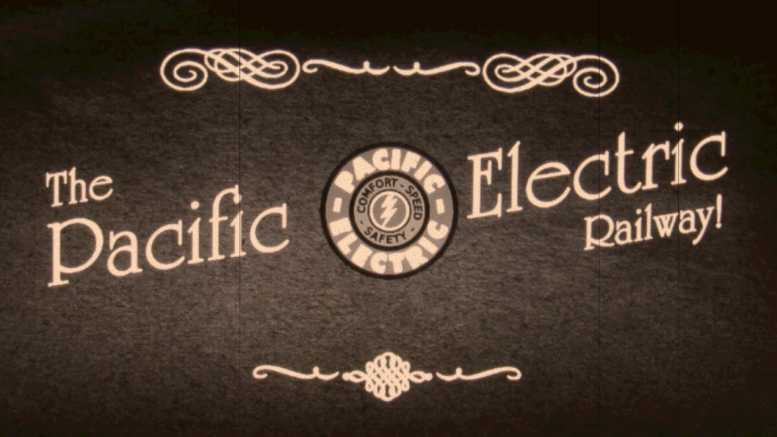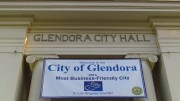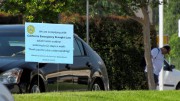They say that history repeats itself and that’s certainly true of the transportation revolution unfolding in the San Gabriel Valley, with the nearly one billion dollar Gold Line Foothill Extension from Pasadena to Azusa.
Many consider electric rail the future of transportation, but the region actually had it more than a century ago.
From the early to mid-1900s, SoCal was abuzz with electric rail service. Let’s take a brief look at our past to see where the future is taking us.
Before the car culture of Los Angeles consumed the landscape, the area was blanketed by a webwork of rails stretching from the mountains to the sea. It was the Pacific Electric Railway.
From 1901 to 1961, the Pacific Electric, otherwise known as the Red Car, provided an inexpensive and classy way for residents, shoppers and businessmen to get where they needed to go.
The interurban system was founded by railroad and real estate tycoon Henry Huntington, whose uncle Collis Huntington develop the Southern Pacific Railroad.
Henry Huntington’s presence was widely felt and had a lasting impact. Huntington Beach, Huntington Park and Huntington Drive are named for the man who started the PE.
At its height, the PE stretched on eleven hundred miles of electrified rail. Overhead, a webwork of power lines hung like spider silk.
Trains originated in LA at Sixth Street and Main and traveled as far east as Mt. Baldy, as far south as Newport Beach and as high as Echo Mountain in the San Gabriel Mountains.
When the PE came into existence, downtown LA was experiencing tremendous real estate growth, some of it at the hands of Huntington.
The Red Car was considered a “loss leader.” It wasn’t very profitable, but PE’s investors made money by supplying electricity to new communities and acquired tremendous land holdings from groups who wanted to get the PE and electricity to their towns.
Glendora officially became part of the Pacific Electric in December of 1907 when the pre-existing line, built in 1902, was extended eastward from Azusa.
The Monrovia-Glendora Line wound its way through many communities, including San Marino, Sierra Madre, Arcadia, Monrovia, Duarte, Azusa and finally Glendora.
The Red Car also ran freight and mail service, with freight being a more profitable venture than moving passengers. The Monrovia-Glendora Line was the ninth most important freight operation out of the entire system.
The first Red Car to roll from LA to Monrovia began on March 1, 1903. Patrons could get from Los Angeles to the “gem city of the foothills” in under an hour and for a 50-cent round trip.
The Monrovia-Glendora Line was also famous because of the old and new Santa Anita racetracks, which the PE heavily served, moving hoards of racing fans to and from the Great Race Place.
The Monrovia-Glendora Line was also famous for the Great Bridge, also known as the Puente Largo Bridge, which spanned the San Gabriel River. The reinforced concrete structure measured over one thousand feet long, quite a feat for its day. The bridge is used as a gateway to the San Gabriel River Bike Path.
Past the bridge in Duarte, the Red Car did some street running along ninth street in Azusa.
In Glendora, the Red Car route continued eastbound, just north of the former Atchison, Topeka and Santa Fe railroad, behind where Vons now stands, along Mountain View Avenue and through what is now the Plaza in downtown Glendora, eventually terminating where Finkbiner Park now sits.
Prior to World War II, PE officials actually favored abandoning the line due to declining patronage east of Monrovia, but gas rationing during the war kept the line moving.
The Monrovia-Glendora Line’s resurgence in popularity was short-lived. On September 30th, 1951 at 12:40 a.m., the last train on the Monrovia-Glendora Line rolled out of Los Angeles.
Southern Pacific Railroad, which took ownership of the Red Car only a few years after Huntington created it, eliminated the PE in favor of expanding freight service.
Coupled with the increasing interest in automobiles, the Pacific Electric stopped running altogether in April, 1961. The PE’s sister trolley system, the Los Angeles Railway Yellow Car, ran on the streets of LA until 1963. Metropolitan Coach Lines, an early incarnation of what would become the MTA bus system, took the place of the trolleys.
Looking at Glendora today, it’s hard to tell where the Red Car used to run. A bronze plaque adorning the plaza is a gentle reminder of the Red Car’s place in Glendora’s history.
Some of the old Pacific Electric right-of-way has found a new use by being converted to bike paths and walking trails, courtesy of organizations, such as the Rails to Trails Conservancy, of which the Duarte Bike Trail is a part of.
After the rails were torn up between LA and Arcadia, a new connecting spur line was built to Azusa, branching off from the Red Car’s former San Bernardino Line. The right of way is now used by Metrolink.
That spur line, dubbed the Azusa Branch in 1917, is still used by Union Pacific Railroad. A small portion of the Azusa Branch sits decaying at the end of the spur. The old rail still has the “Carnegie 1906” branding stamped to it. A small reminder of a storied past.
Looking at the years ahead, Metro authorities and community leaders continue plans that will take the Gold Line eastward through Glendora to Montclair. While the next phase of the Extension is without funding, a sales tax measure is being proposed for the November 2016 ballot. What is the future of electric rail in Glendora? Only time will tell.
View Pacific Electric Northern District routes on Google Maps






